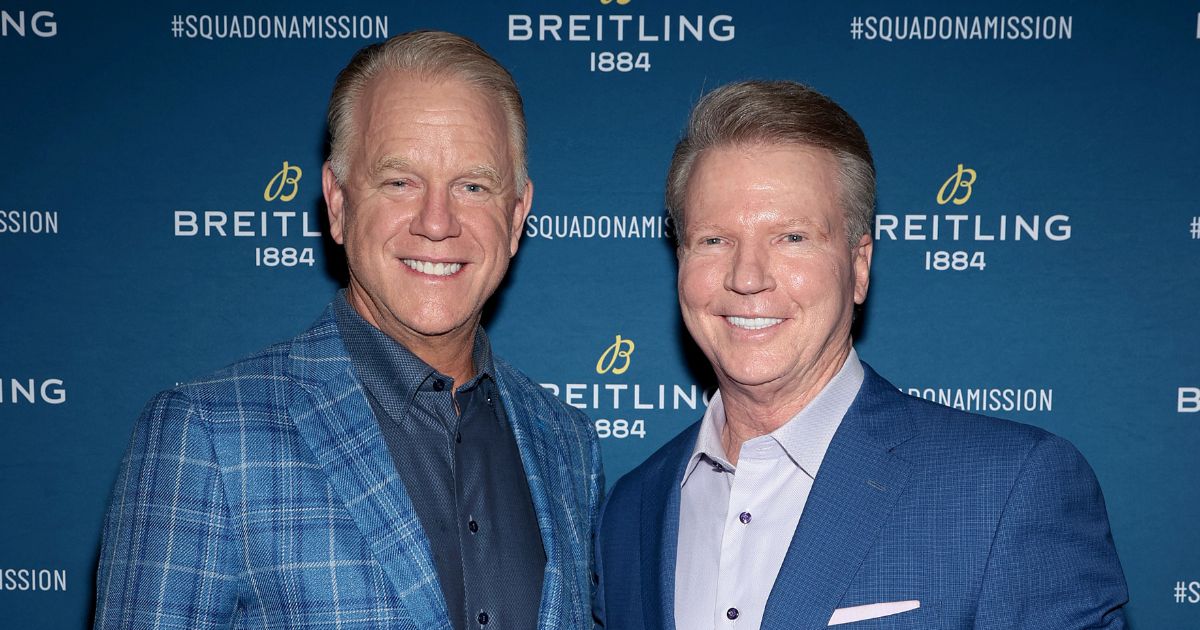Ladies, one Stanley Cup each, please
The Insanity of the Stanley Cup Obsession
A few months ago, Mark Hemingway argued in these pages that Taylor Swift is a sign of societal decline (haters gonna hate). But a much bigger sign of decline threatens us as we enter 2024: the Stanley cup.
No, not the hockey trophy. I’m talking about that gargantuan stainless steel, insulated tumbler that yoga pants-wearing millennials the world over tote around like it’s their precious young. To be more precise, it’s less the century-old brand’s product that’s the problem and more the new insane obsession with it.
Stanley Insanity
And yes, it is insane. The crazed masses camp out in store parking lots in the freezing cold, not for necessities like food or shelter, or even annual sales on spendy appliances, but for a $45 tapered cup. One video shows a customer jumping the counter at a Target Starbucks and attempting to steal one before he’s accosted by the scorned people waiting in line. In the clip below, you can watch Stanley fanatics swarm a display of hideous red and magenta tumblers. According to the person who recorded the video, the things sold out in less than four minutes.
The mega-cups filled out Christmas wish lists and appeared in oodles of holiday social media giveaways. Spot them in the hand or cup holder of nearly any Gen Z college student or millennial mom. In just four years, Stanley — once a brand treasured by outdoorsmen and blue-collar Americans — skyrocketed from $73 million in annual sales to a forecasted three-quarters of a billion in 2023, a more than 10-fold increase thanks in large part to the monstrous tumbler, officially branded as the “Quencher.”
But why?
You’ve got to hand it to Stanley — the quality is top-notch. And the brand has expertly handled marketing opportunities to entice the new consumer demographic. Just a couple of months ago, one woman posted a TikTok of her Stanley tumbler sitting in the cup holder of her car — which had been completely burned down. But the cup? Unscathed but for a little soot and a deformed straw. In the video, the woman even picks up the product and shakes it, revealing that there’s somehow still ice inside.
“Everybody’s so concerned about if the Stanley spills, but what about if it melts? [It went through] a fire yesterday, and it still has ice in it,” she announces.
@danimarielettering Thirsty after you catch on fire? @Stanley 1913 is like no problem i gotchu #fyp #carfire #accident #stanleycup ♬ original sound – Danielle
In a response video, the president of Stanley announced the company would send the woman some new cups. Not only that: “We’ve never done this before, and we’ll probably never do it again, but we’d love to replace your vehicle,” he said.
The original car fire video is approaching 100 million views, and Stanley’s response has more than 50 million — and that’s just on TikTok. Brilliant.
It’s no wonder consumers are impressed. And hey, everybody’s entitled to drink her beverage from her vessel of choice. There’s nothing wrong with investing in quality-made merchandise. So if you prefer a massive Stanley to a Yeti or a Hydroflask or a good old-fashioned drinking glass, fine.
But three? A dozen? One in every color? What the heck is going on?
There’s obviously more to Stanley’s popularity than its quality. The obsession didn’t start with Stanley’s literal trial by fire, and the madness isn’t limited to one dramatic instance of Starbucks parkour and thievery.
Under the Influence
The mania actually started with the three ladies who founded the blog and Instagram account “The Buy Guide.” The “influencer” train left the station when the women embarked on a rare wholesale endeavor, purchasing 10,000 cups and reselling them within just a few days, because they were obsessed with the “must-have product.”
If there’s a theme to our cultural consumerist rot, it’s this pattern: a social media-fueled frenzy to convince the mindlessly scrolling mob that some random beverage doodad is something they “must have.”
So they buy and they buy and they buy some more. Every color. Every special edition. They have to have it. Just like that, the influencer effect hypnotizes a whole demographic into believing a colorful collection of $45, foot-tall water bottles isn’t an irritating cabinet avalanche waiting to happen. Rather, it’s an aesthetic. A personality.
That’s what makes the craze a sign of cultural decline, not just a neurotic trend. One writer expressed it perfectly on X, formerly Twitter:
It’s like no one knows what to want anymore [because] no one has a real personality and life is too comfortable for actual wants to arise naturally, but the want itself persists. … Consumers no longer have personal curated style, needs, or tastes, they simply look to online influencers to tell them what to satiate their never ending desire for more with.
The mindless, materialist trap is intentional, brought about by an unholy alliance between attractive influencers and brands desperate to fill their coffers. The Buy Guide ladies admit as much, with one of them noting the importance of marketing to millennial women in particular: “Even if you are a men’s clothing line — no matter what you are — if you are not finding a way to speak to this 25-to-50-year-old female, you’re missing the mark because those are the buyers of our economy. They buy for their families, they buy for their husbands, they buy for their businesses,” she said.
“Keeping up with the Joneses” is enough of a recipe for discontentment, but the influencer trap extends infinitely beyond your neighbor’s lawn — to every ad, giveaway, viral trend, affiliate link, must-have, and link in bio — and feeds on women’s propensity to compare. The delirium it inspires impoverishes our souls while enriching the corporate machine. The more we scroll, the more we want. The more we want, the more we buy. And the more we buy all the pointless stuff the influencers sell us, the more we lose sight of our unique tastes and the individuality with which we were created.
Just watch the Target swarm video again. As Gen Zer and Independent Women’s Forum junior fellow Noelle Fitchett astutely wrote on X, almost all the women in the clip are wearing the same outfit: Ugg-style boots or slippers with black Lululemon pants. “Just because you see something on TikTok doesn’t mean you need to buy it,” Fitchett said.
The Stanley scramble isn’t a result of product scarcity. It’s a sign of social sickness. And the cure won’t be found on Instagram.
Stop the scrolling. Log off. Don’t let the things you want — or think you need — be dictated by strangers. No influencer-inspired lifestyle or 40-ounce “Quencher” can satiate your real thirst for more.
How does social media play a role in the obsession with the Stanley Cup and the influence of consumerism
The obsession with the Stanley Cup, not the hockey trophy but the massive stainless steel tumbler, has reached new heights and is a clear sign of societal decline. People are going to extreme lengths to obtain these $45 cups, camping out in store parking lots in freezing cold weather, and even attempting to steal them from Starbucks counters. Videos of people swarming displays of the cups and the products selling out in minutes have gone viral.
What is even more surprising is the rapid increase in sales of Stanley products. Once treasured by outdoorsmen and blue-collar Americans, the brand has seen a tenfold increase in annual sales, from $73 million to a forecasted three-quarters of a billion in 2023. The main driving force behind this surge in popularity is the Stanley tumbler, officially branded as the “Quencher.”
But why are people so obsessed with these cups? One explanation could be the quality of the product. Stanley has expertly marketed their tumblers, showcasing their durability and resilience. One viral video shows a Stanley tumbler surviving a car fire with ice still inside. The company even offered to replace the woman’s vehicle, gaining millions of views and further promoting the hype around the cups.
The influence of social media cannot be ignored in the Stanley Cup obsession. The trend started with three women who founded a blog and Instagram account called ”The Buy Guide.” They purchased 10,000 cups and resold them within days, creating a frenzy among their followers. This follows a pattern of social media-fueled consumerism, where influencers convince the masses that they ”must have” a certain product.
The obsession with the Stanley Cup is a symptom of a larger problem in our society. People are no longer able to determine their own wants and desires, instead looking to online influencers to dictate what they should consume. The desire for more, driven by social media and the influencer effect, has replaced personal curated style and individual tastes.
While there is nothing inherently wrong with investing in quality-made merchandise, the excessiveness of the Stanley Cup obsession is concerning. Owning one or two cups is understandable, but people are now collecting them in every color and edition imaginable. This mindless consumerism and the need to have the latest trend is a reflection of our culture’s decline.
In conclusion, the Stanley Cup obsession highlights the decline of our society. People are going to great lengths to obtain these expensive tumblers, driven by social media trends and the influence of online influencers. The need for more, without any real understanding of personal style or taste, is a clear indication of cultural decline. It is time to reevaluate our values and focus on what truly matters rather than succumbing to mindless consumerism.
" Conservative News Daily does not always share or support the views and opinions expressed here; they are just those of the writer."





